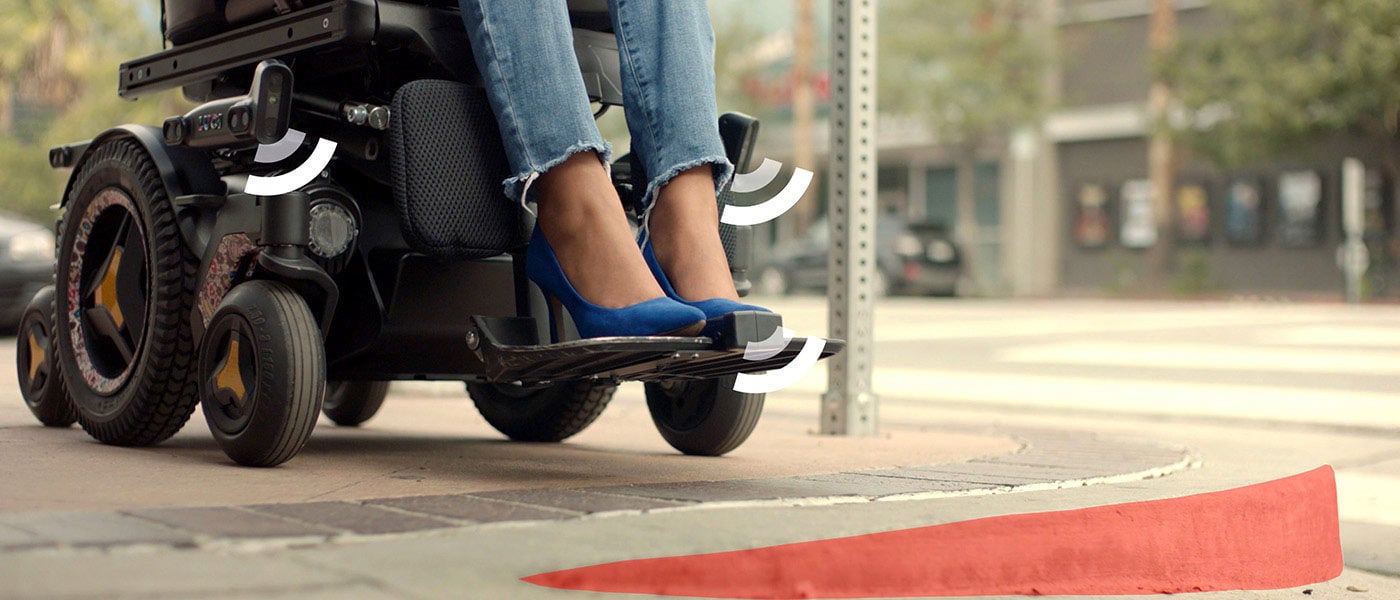The
Internet of Medical Things (IoMT)
is increasingly being used to collect patient data from medical devices and transmit it to cloud-based IT systems, where it can then be used to improve patient safety and outcomes, while optimizing health care processes - as Beecham Research’s Robin Duke-Woolley has discussed in two recent Sierra Wireless blog posts (
here
and
here
).
Perhaps few connected medical devices demonstrate how IoMT solutions are transforming health care better than LUCI. LUCI is a hardware and software platform that uses stereo vision, infrared, ultrasonic, and radar to enable power wheelchairs to ‘see’ their environment. Recently named one of TIME Magazine’s Best Inventions of 2020, LUCI uses Sierra Wireless’s HL7800 module and Enhanced Carrier Connectivity service to help wheelchair users avoid collisions, drop-offs, and falls. By making power wheelchairs smarter and safer, LUCI gives power wheelchair users more freedom to more fully experience the world.
LUCI Smart Wheelchairs Increase Independence While Reducing Risk
More than 75 million people - around 1% of the world’s population - use a wheelchair on a daily basis. While they provide their users with mobility, wheelchairs also come with risk. Wheelchair collisions, tip overs, and falls are common, and can often lead to serious injuries. A recent study found that over a three year period, 87% of wheelchair riders reported a tip or fall. Another study found that hospitals reported 175,000 emergency room visits from wheelchair accidents in the last year that this data was tracked, 30,000 of which were serious enough to lead to admission.
It was one of these accidents that led to the development of LUCI. Barry Dean, CEO and co-founder of LUCI, has a daughter who lives with cerebral palsy and uses a power wheelchair. When the mother of a close friend tipped over in her wheelchair, resulting in serious leg and arm injuries, Barry worried his daughter could face a similar injury and decided to take matters into his own hands. He started working with his brother Jered, an engineer with more than a decade’s experience in new product development, to try to develop a solution that would help prevent such accidents from happening. The result of their work was LUCI, a first-of-its-kind hardware and software platform that mounts onto new and existing power wheelchairs, providing collision avoidance, drop-off and tip-over protection and secure cloud connectivity.
While LUCI uses technologies similar to those used in autonomous vehicles, LUCI does not make wheelchairs autonomous -- and with good reason. Most wheelchair users don’t want to be “driven” by their wheelchair, they want to be able to confidently and safely drive their wheelchair themselves.
LUCI was designed to meet this need. A cloud-connected IoMT solution that can be integrated into two-thirds of the power wheelchairs currently on the market, LUCI helps users avoid collisions and dangerous drop-offs. It can also get them help quickly if they do have an accident by notifying the user’s emergency contacts if the user has a tip, collision, or fall.
Sierra Wireless Brings to IoMT Solutions Like LUCI Low-Power, National Wireless Connectivity
To do this, LUCI needs to extract data from the wheelchair and LUCI’s own sensors, and then securely transmit this data to the cloud – all while not draining the wheelchair’s battery (which is also used to power the wheelchair itself).
Sierra Wireless’s HL7800 module, in conjunction with its Enhanced Carrier Connectivity service, meets these needs. The multi-mode Low Power Wide Area (LPWA) module uses Cat-M and NB-IoT cellular networks to minimize the energy consumed by LUCI when it transmits data from the wheelchair to the cloud. The module’s compact CF3® design also allows the LUCI team to easily migrate between different connectivity technologies, helping them future-proof their platform.
In addition, Sierra Wireless’s Enhanced Connectivity Services provides LUCI users with broad national wireless coverage. With these services, LUCI can connect to different carriers – AT&T, T-Mobile, Verizon, or Rogers networks -- depending on which carrier provides the best coverage in a particular location. At the same time, Sierra Wireless’s Global Network Operation Center (GNOC) monitors these networks, preventing downtime and helping the LUCI team quickly resolve any connectivity issues. With Sierra Wireless’s Enhanced Carrier Connectivity service, LUCI has a single point of accountability for all their connectivity, along with a unified platform for setting up and managing this connectivity, reducing operational costs.
“We chose Sierra Wireless because the company offered us a unique integrated solution,” said Peter Knapp, COO at LUCI. “The common form factor will make future product development faster, and its global presence ensures we have the support we need. We were able to reduce our development time and shorten our time to market, and simplify deployment and optimize coverage of the product for our customers.”
Using connectivity solutions and services provided by Sierra Wireless, LUCI helps power wheelchair users navigate places they previously found difficult, stressful, or dangerous, helping them more fully experience the world. As LUCI shows, IoMT solutions will not just transform people’s lives in the future – it is already being used to transform them today.
Read the full LUCI case study and Start with Sierra to learn more about how Sierra Wireless can help your organization use the IoMT to increase patient safety, improve patient outcomes, and optimize health care processes.
